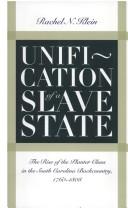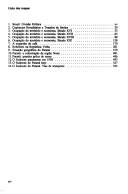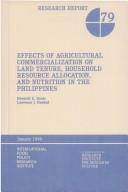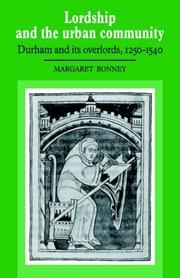| Listing 1 - 10 of 14 | << page >> |
Sort by
|
Book
ISBN: 5212002710 9785212002714 Year: 1990 Publisher: Moskva : Kniga,
Abstract | Keywords | Export | Availability | Bookmark
 Loading...
Loading...Choose an application
- Reference Manager
- EndNote
- RefWorks (Direct export to RefWorks)
Serfdom --- Serfdom. --- Social conditions. --- Travel. --- To 1801. --- Russia --- Russia. --- Description and travel. --- Social conditions
Book
ISBN: 3515057706 Year: 1990 Volume: 22 Publisher: Stuttgart : F. Steiner,
Abstract | Keywords | Export | Availability | Bookmark
 Loading...
Loading...Choose an application
- Reference Manager
- EndNote
- RefWorks (Direct export to RefWorks)
Slavery --- Esclavage --- History --- Histoire --- -Slavery --- -Abolition of slavery --- Antislavery --- Enslavement --- Mui tsai --- Ownership of slaves --- Servitude --- Slave keeping --- Slave system --- Slaveholding --- Thralldom --- Crimes against humanity --- Serfdom --- Slaveholders --- Slaves --- -History

ISBN: 0807839434 146960132X 0807843695 0807818992 9781469601328 9780807818992 9798890886705 Year: 1990 Publisher: Chapel Hill [North Carolina] London [England]
Abstract | Keywords | Export | Availability | Bookmark
 Loading...
Loading...Choose an application
- Reference Manager
- EndNote
- RefWorks (Direct export to RefWorks)
Plantation owners --- Slavery --- History --- South Carolina --- Politics and government --- Abolition of slavery --- Antislavery --- Enslavement --- Mui tsai --- Ownership of slaves --- Servitude --- Slave keeping --- Slave system --- Slaveholding --- Thralldom --- Owners of plantations --- Planters (Persons) --- Crimes against humanity --- Serfdom --- Slaveholders --- Slaves --- Landowners --- Enslaved persons
Book
ISBN: 0817382542 9780817382544 081730486X 9780817304867 Year: 1990 Publisher: Tuscaloosa University of Alabama Press
Abstract | Keywords | Export | Availability | Bookmark
 Loading...
Loading...Choose an application
- Reference Manager
- EndNote
- RefWorks (Direct export to RefWorks)
The Formative Period in Alabama, 1815-1828 is a beautifully crafted history of the evolution of the state written by Thomas Perkins Abernethy in 1922. The work shows how Alabama grew out of the Mississippi Territory and discusses the economic and political development during the years just before and just after Alabama became a state. Abernethy's story begins when Alabama existed as the eastern part of the Mississippi Territory, settled primarily by Cherokees, Choctaws, and Creeks, a few traders, and some brave but foolhardy "squatters" who thought to supplant the India
Alabama --- History --- Slavery --- History. --- Abolition of slavery --- Antislavery --- Enslavement --- Mui tsai --- Ownership of slaves --- Servitude --- Slave keeping --- Slave system --- Slaveholding --- Thralldom --- Crimes against humanity --- Serfdom --- Slaveholders --- Slaves --- Enslaved persons

ISBN: 9070280922 Year: 1990
Abstract | Keywords | Export | Availability | Bookmark
 Loading...
Loading...Choose an application
- Reference Manager
- EndNote
- RefWorks (Direct export to RefWorks)
981 --- Geschiedenis van Brazilië --- Theses --- 981 Geschiedenis van Brazilië --- Land tenure --- Peasants --- Peasantry --- Agricultural laborers --- Rural population --- Marks (Medieval land tenure) --- Villeinage --- Agrarian tenure --- Feudal tenure --- Freehold --- Land ownership --- Land question --- Landownership --- Tenure of land --- Land use, Rural --- Real property --- Land, Nationalization of --- Landowners --- Serfdom --- History --- Brazil --- Rural conditions.
Book
ISBN: 3515055851 Year: 1990 Publisher: Stuttgart : Franz Steiner,
Abstract | Keywords | Export | Availability | Bookmark
 Loading...
Loading...Choose an application
- Reference Manager
- EndNote
- RefWorks (Direct export to RefWorks)
Church lands --- -Land tenure --- -Secularization --- -Appropriation and impropriation --- Impropriation --- Secularization --- Church and state --- Agrarian tenure --- Feudal tenure --- Freehold --- Land ownership --- Land question --- Landownership --- Tenure of land --- Land use, Rural --- Real property --- Land, Nationalization of --- Landowners --- Serfdom --- Glebes --- Church property --- Land use --- Mortmain --- Temple lands --- History --- Law and legislation --- Land tenure --- History. --- -History --- Appropriation and impropriation --- Mainmorte --- Secularisation --- Andalousie (espagne) --- Espagne --- 18e-19e siecles
Book
ISBN: 9211311357 Year: 1990
Abstract | Keywords | Export | Availability | Bookmark
 Loading...
Loading...Choose an application
- Reference Manager
- EndNote
- RefWorks (Direct export to RefWorks)
Land tenure --- -Land titles --- -Land use --- -Land --- Land utilization --- Use of land --- Utilization of land --- Economics --- Land cover --- Landscape assessment --- NIMBY syndrome --- Land titles --- Land-warrants --- Titles, Land --- Conveyancing --- Deeds --- Ejectment --- Prescription (Law) --- Vendors and purchasers --- Agrarian tenure --- Feudal tenure --- Freehold --- Land ownership --- Land question --- Landownership --- Tenure of land --- Land use, Rural --- Real property --- Land, Nationalization of --- Landowners --- Serfdom --- Registration and transfer --- -Information services --- Law and legislation --- -Registration and transfer --- Land use --- Land --- Information services

ISBN: 0896290816 Year: 1990 Publisher: Washington, D.C. International Food Policy Research Institute
Abstract | Keywords | Export | Availability | Bookmark
 Loading...
Loading...Choose an application
- Reference Manager
- EndNote
- RefWorks (Direct export to RefWorks)
Land. Real estate --- Nutritionary hygiene. Diet --- Foreign trade. International trade --- Income --- Philippines --- Agriculture --- -Households --- Land tenure --- -Nutrition --- -Produce trade --- -Agricultural marketing --- Agricultural products --- Food trade --- Food industry and trade --- Commodity exchanges --- Farm produce --- Alimentation --- Food --- Nutrition --- Health --- Physiology --- Diet --- Dietetics --- Digestion --- Food habits --- Malnutrition --- Agrarian tenure --- Feudal tenure --- Freehold --- Land ownership --- Land question --- Landownership --- Tenure of land --- Land use, Rural --- Real property --- Land, Nationalization of --- Landowners --- Serfdom --- Population --- Families --- Home economics --- Farming --- Husbandry --- Industrial arts --- Life sciences --- Food supply --- Economic aspects --- -Economic aspects --- Health aspects --- Households --- Produce trade --- -Agriculture --- Agricultural marketing

ISBN: 285939365X 9782859393656 Year: 1990 Volume: vol *25 Publisher: Lille: Presses universitaires de Lille,
Abstract | Keywords | Export | Availability | Bookmark
 Loading...
Loading...Choose an application
- Reference Manager
- EndNote
- RefWorks (Direct export to RefWorks)
History of Europe --- anno 500-1499 --- Peasants --- Agriculture --- Paysannerie --- History --- Histoire --- Europe --- Rural conditions --- Conditions rurales --- Villages --- -Middle Ages --- Land tenure --- -History --- -Land tenure --- Dark Ages --- History, Medieval --- Medieval history --- Medieval period --- Middle Ages --- World history, Medieval --- World history --- Civilization, Medieval --- Medievalism --- Renaissance --- Agrarian tenure --- Feudal tenure --- Freehold --- Land ownership --- Land question --- Landownership --- Tenure of land --- Land use, Rural --- Real property --- Land, Nationalization of --- Landowners --- Serfdom --- Hamlets (Villages) --- Village government --- Cities and towns --- Rural conditions. --- Middle Ages. --- History. --- Villages - - History - Europe --- Land tenure - Europe - History --- Europe - Rural conditions --- Moyen age --- Communautes rurales --- Europe occidentale --- Histoire medievale --- 12e-15e siecles

ISBN: 0521362873 0521022851 0511097506 0511583842 9780521362870 9780511583841 9780521022859 9780511097508 Year: 1990 Publisher: Cambridge : Cambridge University Press,
Abstract | Keywords | Export | Availability | Bookmark
 Loading...
Loading...Choose an application
- Reference Manager
- EndNote
- RefWorks (Direct export to RefWorks)
The city of Durham, although geographically far removed from the centre of political power in England in the later medieval period, was of great strategic and ecclesiastical importance during its early history. It was the seat of the prince bishops, a military headquarters for the defence of the northern borders of England, a centre for pilgrimages to the shrine of St Cuthbert and the principal market town for the region. After tracing Durham's late tenth-century origins, the book examines the subsequent developments in religious and military building work on the peninsula which accompanied the growth of a successful urban community in the eleventh and twelfth centuries. This section of the book is complemented by the reproduction of all the extant medieval plans for Durham in an appendix, which also includes later maps of the town and several illustrations which help to explain the complex topography. Furthermore, although at first sight Durham's overlords might seem oppressive, there is little evidence of the townsmen's dissatisfaction with their rule, and none of urban revolt in late medieval Durham.
Feudalism --- Land tenure --- Nobility --- Féodalité --- Propriété foncière --- Noblesse --- History. --- Histoire --- Durham (England) --- Durham (Angleterre) --- History --- Féodalité --- Propriété foncière --- Arts and Humanities --- Feudalism - England - Durham - History - 16th century. --- Feudalism - England - Durham - History - To 1500. --- Land tenure - England - Durham - History. --- Nobility - England - Durham - History. --- Land use, Rural --- Real property --- Land, Nationalization of --- Landowners --- Serfdom --- Agrarian tenure --- Feudal tenure --- Freehold --- Land ownership --- Land question --- Landownership --- Tenure of land --- Civilization, Medieval --- Land use --- Chivalry --- Estates (Social orders) --- Upper class --- Aristocracy (Social class) --- Titles of honor and nobility --- Noble class --- Noble families --- Nobles (Social class) --- Peerage --- Durham, Eng. --- Durham (Durham)
| Listing 1 - 10 of 14 | << page >> |
Sort by
|

 Search
Search Feedback
Feedback About UniCat
About UniCat  Help
Help News
News